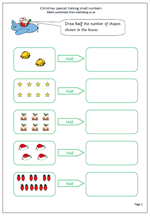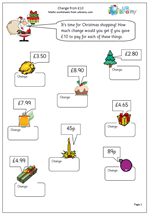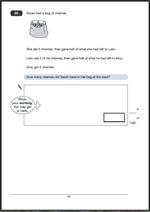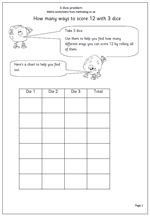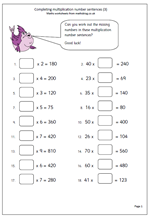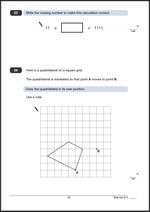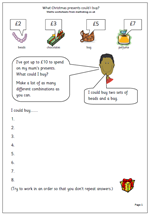 Here we have an open-ended page to keep up the Christmas theme for this week.
Here we have an open-ended page to keep up the Christmas theme for this week.
More Christmas themed worksheets can be found at;
http://pages.urbrainy.com/happy-christmas-2011
There are four items with prices; a set of beads for £2, a box of chocolates for £3, a bag for £5 and a bottle of perfume for £7.
The task is to find as many different combinations of presents that can be bought for up to £10. The key here is that the whole £10 does not have to be spent.
So 3 sets of beads and a box of chocolates is one possibility, costing £9 in total.
As usual, look for well a well organised logical approach.
This page can be found in the year 4 Using and Applying maths category.
More Christmas themed worksheets can be found at;



